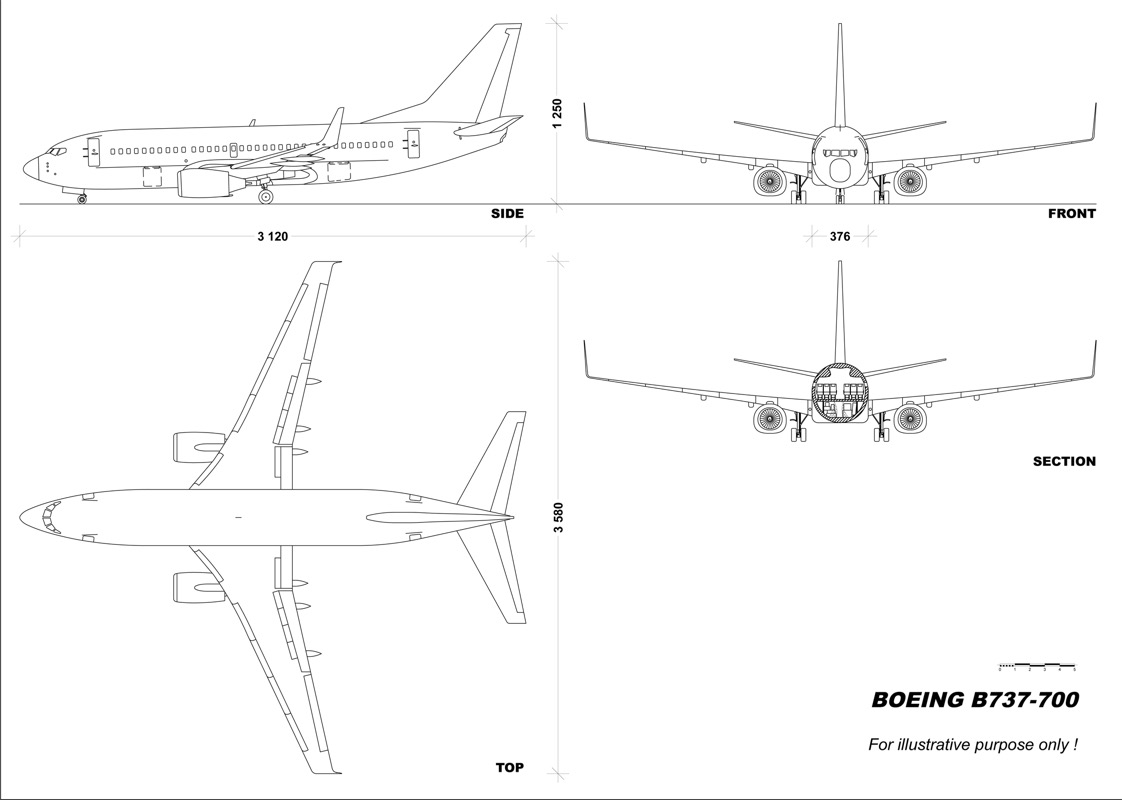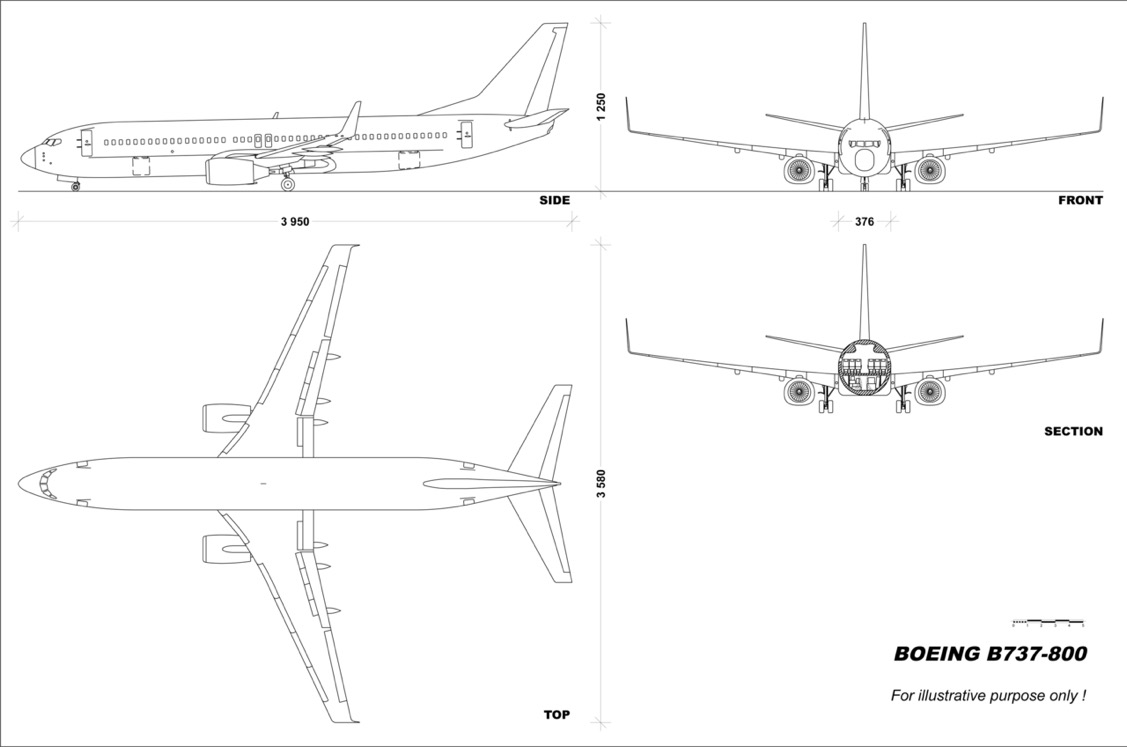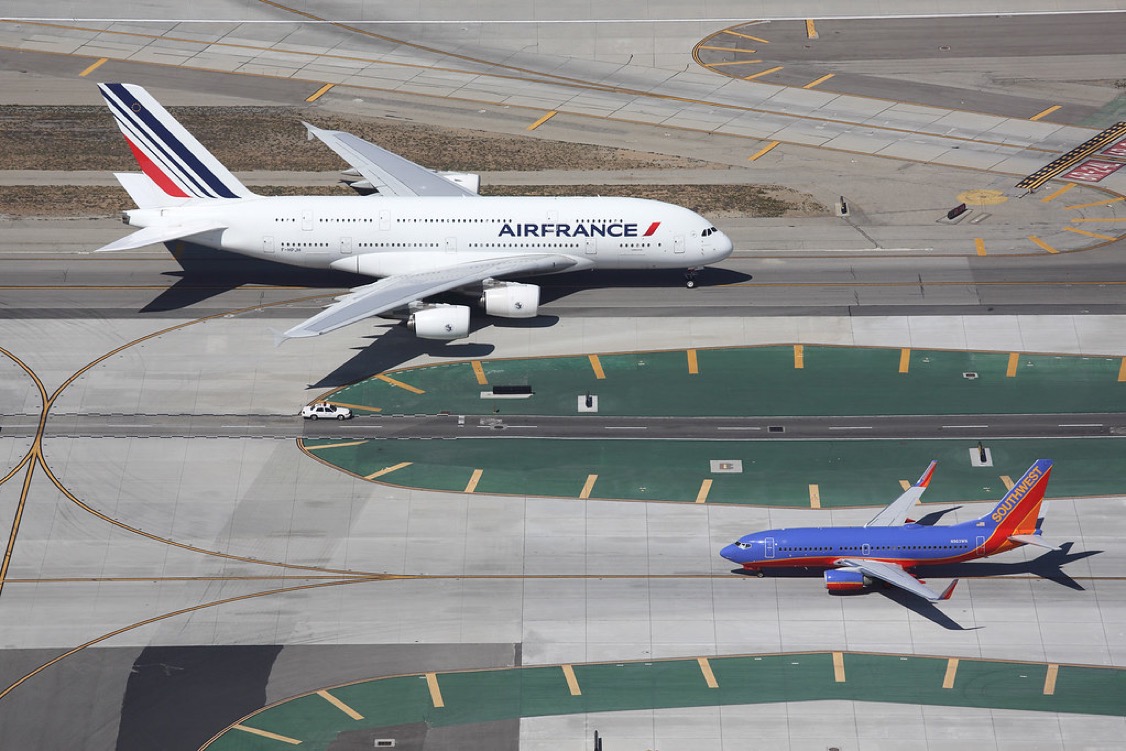Boeing B737-800
last update: 19 December 2021
In mid-late December 2021 we flew with our local carrier to Málaga on a Boeing 737-800. COVID-19 had imposed itself on the routines in both our departure ad destination airport, as well on our local carrier, but we were also in the early phase of the Omicron variant, a "variant of concern".
Wikipedia has an extensive article on the Boeing 737 Next Generation where were learn that:-
The 737-800 is a twin-jet, narrow-body aircraft designed as a competitor to the Airbus A320 family
The 737-800 is a stretched version of the 737-700, already being flown by our local carrier
This is a 189 seat one-class version, and is used mostly for package tour to destinations such as Malaga, Porto, Tenerife, Rome, Hurghada, etc.
According to some reports this specific aircraft was delivered in October 2015, and became operational in December 2015.
Our particular flight was to Malaga, as was expected to take 2 hours 45 minutes. We left 14 minutes late, but still landed 3 minutes early.
I reported on our last flight with our local carrier, which was also a trip to Malaga, but on an older 737-700 (report here).
Comparison between 737-800 and the older 737-700
The key difference is that the 737-800 can carry 189 passengers in one-class, whereas the older 727-700 only carried 149 passengers.


The 737-800 is based on a stretched fuselage (39.50 metres compared to 33.60 metres), but with the same wingspan (35.80 metres) and wing area (125 square metres). The engines are more powerful and the maximum takeoff weight has increased to 79 tons from 70 tons, although it would appear that the range has dropped to around 5,667 km from an earlier 6,115 km.
Many people have noticed that the -800 is quieter than the -700.
Because the -800 is a bit longer than the -700 and weighs more, takeoff and approach speeds are a bit faster due to tail clearance margins (tail strike risks are extremely low on both aircraft).
My own, very subjective view, was that the -800 seating was more comfortable (despite the pitch being the same on both the -800 and -700). The interior lighting looks nicer and more modern, and the overhead lockers look much larger and deeper on the -800. Not sure if they were the newer "Space Bins", and I'm told the design is called the "Sky Interior" with LED lighting.
On this particular -800 my impression was that the seats could not be reclined (or possible only by a very small amount in the front rows).
Can you tell the difference between a -700 and -800? The first thing is to identify a Boeing 737 from an Airbus 320. First, the Boeing 737 has a pointier nose, and the front flight deck windows are more "V" shaped than the Airbus. The Boeing 737 vertical stabiliser, the fin at the back of the plane, has a triangular shape where it attaches to the fuselage, whereas the tail attaches directly the fuselage on the A320 family. In addition the Boeing 737 has a unique feature in that the engine nacelle is not perfectly round, but has a flat bottom and is seemingly very close to the ground.
The landing gear on both the Airbus 320 family and the Boeing 737 family fold into the undercarriage, but on the Boeing the wheels remain visible. Finally a key difference between the -700 and -800, in addition to the increased length and more windows, is that the -700 has only one emergency exist about each wing, whereas the -800 has two emergency exists, next to each other.
As of 2019, the total number of Boeing 737-800's delivered was 4,982, the second highest type being the 737-700 at only 1,128. The Boeing 737-800 is part of the Boeing 737 Next Generation designation. Introduced in 1997, the Boeing 737 Next Generation aircraft offered significant internal upgrades and greater fuel efficiency than the classic generation aircraft before them. These features made the Boeing 737-600, -700, -800 and -900/-900ER immediately popular with airlines, as associated running costs were cheaper. Each of the four types within the Next Generation family was built to fly with a specific passenger capacity and range limits. The Boeing 737-800 hit a sweet spot between a number of different factors. In a one-class configuration, the 737-800 can seat 175 passengers. By comparison, the Boeing 737-600, -700 and -900ER can seat 123, 140 and 177 passengers respectively. The Boeing 737-800’s longer fuselage makes it significantly more spacious, both in terms of passenger space and cargo. And yet the 737-800’s range is not that much less than the 737-600, -700 and -900ER.
The Boeing 737-800 sits in the middle of the 737 family, and this compromise appears to be its recipe for success. It doesn’t have the highest passenger capacity, and it doesn’t have the longest range. But that’s what has made it so popular – the Boeing 737-800 does lots of things well. In a market where there are many larger and smaller aircraft available, the Boeing 737 sticks to its niche and does it well. Our local carrier is a Boeing fan, and they shifted quickly to the 737-800 as ideal for a mixed commercial-package tour offering.
This was an interesting expert comment in one of the discussion groups.
The 737 is a reliable old workhorse of a design. Anytime you design a new “white sheet” airliner from the ground up it will need to go through a lengthy and expensive “type design certification” from the FAA and other international governing bodies around the globe. However, if you do a “stretch” but maintain the key elements such as aircraft handling and pilot “feel” for flight controls, keep the same safety features, etc… you will not have to do extensive “type design” certification and all new pilot training. This will also, allow the maintenance manuals and training to be identical to the current type. If you are a customer this a big plus as you do not need to retrain pilots or maintenance personnel. This can save an airline tens of millions of dollars in additional costs.
Interestingly, it was this exact reason that Boeing developed the "Manoeuvring Characteristics Augmentation System" (MCAS) that caused the two fatal crashes of the new 737-Max airliner. The MCAS system was developed because the larger more powerful CFM LEAP-1B engines used on the 737-Max are simply too large to fit beneath the wings of the 737 airframe. The original 737 Type Design was done back when High Bypass Ratio jet engines were not yet being used in commercial aviation and therefore, the smaller diameter of the original design lead to the plane not needing the ground clearance of the much larger diameter modern engines. Boeing's fix for this with the 737-MAX was to push the engines further forward on the wing mounts in order to clear the ground. This led to a change in felt pilot handling characteristics of the 737-MAX relative to the previous 737’s. In order to not have to do a new type design certification the MCAS was implemented to make the reconfigured 737MAX "artificially" feel the exact same as any other 737.
This unfortunately led to a tragic result as not having to retrain pilots for the 737-MAX, left many pilots not fully understanding what the MCAS was doing on its own to adjust the planes trim during flight, and how to respond properly to an angle of attack or speed indication malfunction due to a bad AOA sensor. This simple work around a re-certification and training led to tragic crashes.
Can you tell the difference between a Boeing 737 and an airbus A380?

In-flight COVID rules
On the carriers website they claim that the aircraft interior is complete disinfected with all surfaces being wiped down.
The mention that the aircraft are fitted with HEPA filters and that the air in the aircraft is changed every 3 minutes.
Masks are mandatory for cabin crews as well as passengers, and no exception is allowed.
There is the claim that boarding & de-boarding takes place in smaller groups, at the gate & on board. This was totally untrue, and no effort was made to do this.
They claim that depending on actual seat load factors, passenger seats will be allocated as widely as possible throughout the flight. Totally untrue since the aircraft was almost full.
It is true that safety instruction cards have been replaced by stickers placed on each seat back, and that inflight sales have been discontinued.
Bus transfers will be avoided whenever possible. Despite boarding bridges being available, we were bussed to our aircraft.
The claim is that the airport lounge is closed until further notice, which must be untrue because it was offered as a optional purchase with the ticket.
Our particular 737-800
Our flight started out "bad" in the sense that flying just before Christmas 2021, was both expensive and nearly full. We were very lucky to have a spare seat in our row.
Boarding we were each handed a hand wipe. Surprisingly large and moist, so a good point.
I had the impression that the aisle was slightly narrower on the -800 than the -700, but can't find any info on this. According to Boeing' manuals all 737's have an interior width of 3.54 metres, so I am probably wrong.
First impressions were generally positive in that it felt easier to find space in the overhead bin, and it also felt much easier to "throw" my backpack up there (I understand the new bins are bigger and also a few centimetres lower than the older bins, and it makes a difference). The seats were just as narrow as in the past, but leg room appeared to be a touch more, and there was (in my opinion) a bit more foot room as well. This maybe due to a light-weight, re-designed seat.
We were clearly informed that wearing a surgical face mask over both the mouth and nose was an obligation, except during eating and drinking. The crew reminded everyone when the waste was collected. We changed out mask before boarding, and again in the arrival airport.
The safety briefing appeared to be entirely done by the video system. I don't remember seeing any physical briefing by cabin crew.
The video system was a set of screens that dropped down from the roof, next to a set of touch sensitive buttons to control individual lighting. There were no in-seat video screens, but the crew did distributed headphones to listen to the cartoons running throughout the flight. With the headphones there was, in the seat armrest, a program selector and volume control. Interestingly I have not seen this option discussed on any of the usually websites.
The seats were equipped with narrow trays, but no power sockets, etc. In the seat picket there was a large in-flight magazine, and a sickness bag.
Food
Food and drink was distributed more or less in the normal way, remembering that we had book seats on what was otherwise a package tour flight.
The food was presented on a narrow tray designed to fit on the narrower fold down in the seat back. On the tray there were four separate "packages":-
A grain-based salad on a shallow rectangular plastic base with a transparent plastic cover.
A white cream desert in a shallow square plastic base with a transparent plastic cover.
A free-standing, unprotected rectangular bread roll.
A sealed paper 'bag' with a 20 g butter cube, a small piece of cheese, and a separate closed plastic envelope containing metal fork, knife, and small spoon, along with a hand wipe, rolled in a paper hand towel.
Drinks were separately served in transparent plastic cups. My wife and I each had one glass of orange juice and one glass of still water. I later had coffee served in a paper cup, with one milk capsule.
I thought the grain-based salad was both healthy, well made, and tasty. My wife was less complimentary. The bread was a darker, more wholesome variety, and I though it was excellent with a dab of butter. The cheese was the usual tasteless blob. The white cream desert was excellent, since it was a kind of soured milk "cheese" covering a red-fruit jam-like filling.
Everything was collected in the usually way, with the plastic glasses being emptied and stacked.
A nice snack, but I can't see much in the way of an anti-COVID design - at least for the passengers.
Comparison with 2020
In 2020 we flew on an older 737-700 whereas this 737-800 was more modern, and in my opinion slightly more comfortable. The food was better this time.
This time there were no restrictions on hand luggage.
Both in 2020 and 2021 the carrier claimed that boarding would be in small groups. This was totally untrue.
The crew were totally unmemorable throughout both flights.
Both flights left late but arrived early or on time.
Important Point
A COVID check is required by law in the canteen of the local carrier.
There was a plan to apply a COVID check in all meetings of the board of directors, the executive committee, in meetings between management and employee representatives, and all other meetings with more than ten people, during training courses and to all employees and visitors in the administration buildings.
But the local carrier forgot that companies with more than 150 employees had to take the decision in agreement with their staff delegation. And the staff delegation was against the introduction of a COVID check. They stated that they might validate a partial introduction of checks only if the costs of the tests were covered by the employer, if the time needed to carry them out was counted as working time and if this did not lead to any processing of personal data, nor to any sanction for an employee refusing it.
So passengers are subject to COVID checks, but not staff of the carrier.
In addition despite the appearance of a new Omicron strain of the virus, the local carrier does not have the authority to collect information about what is considered personal protected health information, i.e. who is vaccinated in their cabin crews, etc.